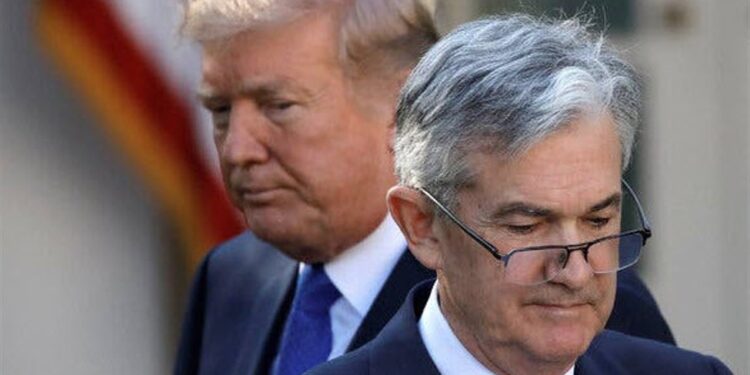One of the most intriguing decisions the Federal Reserve will face during Trump’s presidency is set for June 17, 2026. That’s when economic projections will be unveiled, marking the first meeting led by Trump’s new Chairman of the Federal Open Market Committee. Trump has often expressed regret over choosing Powell, primarily because Powell resisted political interference in rate-setting.
Expect Trump’s chosen candidate for Fed Chair to closely align with his views.
On Wednesday, insider sources from Bloomberg tossed around some potential names, while clarifying who’s likely not on the list for consideration:
Apparently, Fed Governor Christopher Waller, once seen as a strong candidate for the chairmanship, has likely fallen out of favor. This comes after he supported a substantial half-point interest-rate cut back in September. This decision, which occurred just weeks before the presidential election, led Trump to dismiss it as a politically motivated maneuver to secure someone’s tenure in office.
Here’s a look at the possible contenders:
– Kevin Hassett, the soon-to-be White House National Economic Council director
– Larry Lindsey, a former official from George W. Bush’s White House
– Marc Sumerlin, another veteran of Bush’s administration
– David Malpass, who once led the World Bank
– Kevin Warsh, a former Federal Reserve official
– Fed Governor Michelle Bowman
Starting with Bowman, her case adds an intriguing layer of suspense. Trump seems to have successfully nudged Michael Barr away from his role overseeing Fed supervision. Nonetheless, Barr has decided to remain as a regular Fed Governor until his term ends in 2032.
Consequently, Trump needs to appoint someone already at the Fed for the supervision role. Bowman appears to be the likely candidate. Appointed by Trump, she’s a lifelong Republican with a rich banking pedigree. Her family owns the Farmers & Drovers Bank, and she formerly served as Kansas State Bank Commissioner.
Trump has stated that he’ll make his choice soon, as Barr will vacate his position on February 28, or when a successor is confirmed.
Besides this, Trump will have just one more opportunity to make a change at the Fed unless there are resignations. This change would involve replacing Adriana Kugler, whose term finishes next January. Known as a dove, she was previously the chief economist at the Department of Labor under Obama.
So, come June 2026, the Board is projected to consist of:
– The new Fed chair
– Kugler’s successor
– Bowman
– Waller
– Barr
– Jefferson
– Cook
The latter three were appointed by Biden.
Up until now, the makeup of the Fed has been suitably balanced to resist political swaying—or maintain its present dispositions, depending on how you interpret it.
Looking ahead to 2026, the voters include:
– NY Fed President Williams
– The new appointee from Philly to replace Harker
– Minneapolis Fed President (currently Kashkari)
– Dallas Fed President (currently Logan)
– Cleveland Fed President (currently Hammack)
Some of these individuals tend to lean Democratic, though there are nuances. Take Kashkari, for example. He was once aligned with Hank Paulson as a Republican but has since championed social causes. Logan’s political stance remains less defined.
What’s my take on all this?
Frankly, it seems quite overplayed. These individuals are professionals, knowledgeable about policy, and while they may have some political leanings, it isn’t yet like the partisan divide seen in the Supreme Court. They know that manipulating short-term rates for political gain only risks higher rates down the line.
Interestingly, come 2027, voting will shift towards Chicago, San Francisco, Atlanta, and Richmond. The current leaders of these banks could realign the power dynamic. However, remember that 2026 will require various reappointments.
In essence, there are always going to be attempts to paint everything with a political brush. Yet, even if someone aimed to politicize the Fed during Trump’s tenure, they’d face an uphill battle.

















